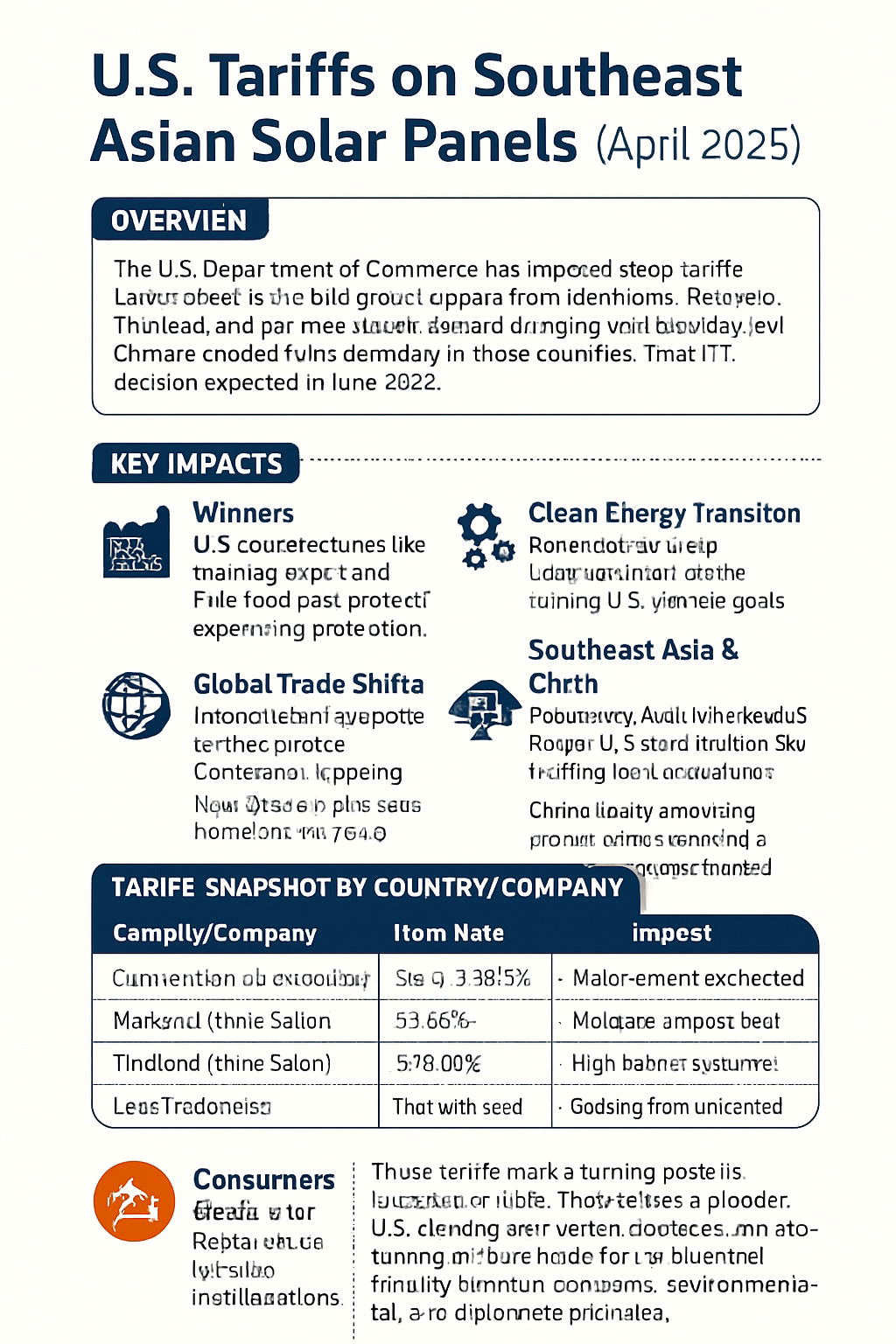Published: April 22, 2025
In a significant shift in global trade and clean energy policy, the United States has finalized steep tariffs—reaching as high as 3,521%—on solar panel imports from Southeast Asia. These tariffs, announced on April 21, 2025, target Cambodia, Malaysia, Thailand, and Vietnam, countries that together accounted for more than 80% of U.S. solar imports last year.
The move is intended to protect domestic manufacturers like Hanwha Qcells and First Solar, who allege that Chinese-owned factories in Southeast Asia have been undercutting prices through unfair subsidies and dumping practices. While this protectionist measure may bolster American solar production, it raises serious questions about costs, international trade dynamics, and the future of the U.S. clean energy transition.
The Economic Divide: Protection vs. Affordability
On one side, U.S. manufacturers see this as a long-awaited corrective measure. The American Alliance for Solar Manufacturing Trade Committee praised the decision, arguing it levels the playing field and secures investments in domestic factories—many of which were incentivized under the Inflation Reduction Act.
But on the other side, solar developers warn that tariffs on imported solar cells, which are often assembled domestically, could sharply increase costs. This would likely slow the rollout of solar projects, impacting affordability for businesses and consumers alike.
Trade Shifts and Global Repercussions
The immediate effect of the tariffs has already surfaced: a drop in imports from the targeted countries and a rise in shipments from alternatives like Laos and Indonesia. As Chinese firms relocate operations to new regions to bypass tariffs, global supply chains are being reshaped in real time.
Countries like Cambodia and Thailand, heavily dependent on solar exports, now face economic headwinds. In particular, non-cooperative exporters from Cambodia are hit hardest, facing the maximum tariff rate.
Climate Goals in the Balance
While the intent behind the tariffs is rooted in economic fairness, the clean energy transition may take a hit. Higher prices could delay solar installations, hindering progress on climate targets. This is especially problematic at a time when the world is racing to reduce carbon emissions.
The tension between promoting domestic industry and accelerating renewable energy adoption is becoming increasingly visible. Whether subsidies or policy tweaks can bridge the gap remains to be seen.
Looking Ahead
The U.S. International Trade Commission (ITC) is set to deliver a final ruling on these tariffs in June 2025. Until then, stakeholders across the solar value chain—manufacturers, developers, international exporters, and climate advocates—are bracing for long-term shifts in how solar panels are sourced, priced, and deployed.
This is more than just a trade decision. It’s a pivotal moment that could redefine the balance between energy security, economic policy, and climate responsibility.
Sources:
- Reuters, U.S. finalizes tariffs on Southeast Asian solar imports
- The Guardian, U.S. to impose tariffs of up to 3,521%
- CNN Business, U.S. wants to slap tariffs as high as 3,500% on solar panels from Southeast Asia

No comments:
Post a Comment